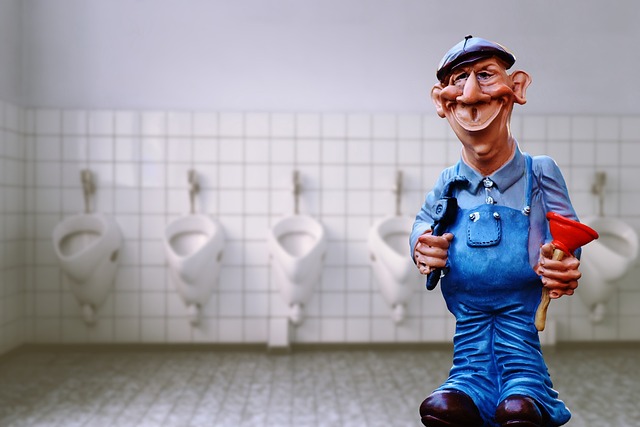Plumbing leaks, often undetected, cause significant damage and waste water. Signs include persistent dripping, sudden water bill spikes, low pressure, visible damage, or mold growth. Common sources are faulty valves, corroded pipes, and poor fixture installation. Modern technology like infrared cameras and listening devices help plumbers detect and repair leaks efficiently, saving on utility costs, preventing home damage, and ensuring health safety. For hidden internal leaks, a plumber's advanced tools and expertise offer superior detection and immediate repairs, crucial for commercial properties to avoid extensive water damage.
Leak detection is a critical service provided by skilled plumbers, helping homeowners mitigate potential water damage. While traditional methods like visual inspection and sound testing remain popular, technological advancements have introduced innovative tools. This article explores modern leak detection techniques, particularly the use of cameras and listening devices, their benefits over conventional methods, and when to trust a plumber for accurate and efficient leak identification.
- Understanding Plumbing Leaks: Common Signs and Sources
- Traditional vs. Modern Detection Methods
- The Role of Technology: Cameras and Listening Devices Explained
- Benefits and Limitations: When to Hire a Plumber for Leak Detection
Understanding Plumbing Leaks: Common Signs and Sources

Plumbing leaks can often go unnoticed, but there are several common signs that homeowners and even professional plumbers can look out for. These include persistent dripping sounds from faucets or pipes, sudden spikes in water bills with no apparent reason, and low water pressure. More evident indicators might be visible water damage on walls, ceilings, or floors, as well as mold growth in suspicious areas.
Common sources of plumbing leaks include faulty valves, corroded pipes, and poorly installed fixtures. Over time, these issues can lead to significant water waste and increased utility costs. A plumber’s expertise is invaluable when it comes to detecting and repairing these leaks, ensuring that your home remains protected from potential water damage and associated health hazards.
Traditional vs. Modern Detection Methods

In the realm of leak detection, traditional methods have long relied on the expertise of plumbers and manual inspections. This involved physically searching for visible signs of water damage or following the trail of a subtle musty odour, which often required extensive time and resources to pinpoint the source of a leak. However, with technological advancements, modern leak detection has revolutionized the industry. Today, plumbers employ cutting-edge tools such as infrared cameras and listening devices to detect leaks with unparalleled precision and efficiency.
In contrast, traditional methods often left room for human error and missed spots, especially in complex plumbing systems. Modern detection methods, on the other hand, offer a more comprehensive approach. Infrared cameras can visualize temperature variations, helping to identify hidden leaks beneath floors or within walls. Meanwhile, listening devices pick up on subtle sounds that might indicate water movement, even in areas inaccessible by human eyes. These innovations have not only enhanced the accuracy of leak detection but also cut down on the time and cost associated with repairs, making it easier for plumbers to serve their clients efficiently.
The Role of Technology: Cameras and Listening Devices Explained

In the modern era, technology plays a pivotal role in leak detection for plumbers and other professionals. One of the primary tools is camera inspection, where high-definition cameras are inserted into pipes to visually inspect for any signs of leaks or damage. This method not only identifies leaks but also provides detailed imagery for accurate assessment and repair planning.
Additionally, listening devices have become invaluable assets in the fight against water leaks. These devices detect subtle sounds and vibrations that may indicate a leak’s presence, even before visible evidence appears. Plumbers can use this technology to quickly pinpoint problematic areas, ensuring efficient repairs and minimizing water damage. Such innovations are revolutionizing how plumbing issues are addressed, making leak detection faster, more precise, and less invasive.
Benefits and Limitations: When to Hire a Plumber for Leak Detection

While using cameras and listening devices can be effective in detecting leaks, especially in hard-to-reach areas, they have their limitations. These methods are primarily visual and auditory, relying on the detection of visible or audible signs of water intrusion. However, not all leaks produce obvious visual or sound cues, particularly internal leaks behind walls or beneath floors. In such cases, a plumber’s expertise is invaluable.
Hiring a plumber for leak detection offers several benefits. Plumbers have access to advanced tools and techniques tailored for identifying and locating leaks accurately. They can navigate complex plumbing systems, ensuring every nook and cranny is inspected. Moreover, plumbers provide immediate solutions by repairing or replacing faulty pipes, saving you from potential water damage and associated costs. This is especially crucial in commercial properties where large-scale leak detection and repair can be time-consuming without professional intervention.
In conclusion, modern leak detection methods, such as cameras and listening devices, have revolutionized the way plumbers identify and address plumbing leaks. These advanced technologies offer precise, non-invasive solutions, ensuring faster repairs and reduced damage. While traditional methods remain valuable, incorporating camera and listening device technology is a game-changer for efficient and effective plumber services. When faced with potential leaks, homeowners should consider these modern tools to ensure prompt and professional resolution.
